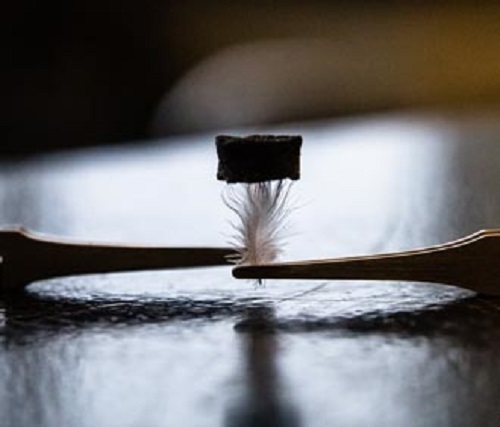Two researchers from McMaster University have figured out how to use the cellulose in trees for storing power in electronic devices.

Emily Cranston and Igor Zhitomirsky are using the organic compound found in plants, bacteria, and algae to build more efficient and durable capacitors. Should their discovery prove scalable, it could lead to the eventual production of lightweight, flexible, and high-powered electronics like wearable devices, portable power supplies, and hybrid / electric vehicles.
“Ultimately the goal of this research is to find ways to power current and future technology with efficiency and in a sustainable way,” says Cranston, whose joint research was recently published in Advanced Materials. “This means anticipating future technology needs and relying on materials that are more environmentally friendly and not based on depleting resources.”
Cellulose is an attractive solution because it offers the advantages of high strength and flexibility, even when used for advanced applications. Of late, researchers have honed in on the capabilities of nanocellulose-based materials — what Cranston and Zhitomirsky were able to do is demonstrate an improved three-dimensional energy storage device that was built using trapped, yet fully functional nanoparticles within the walls of a nanocellulose foam.
Early tests indicate the material is a more sustainable capacitor with higher power density and faster charging capabilities than off-the-shelf rechargeable batteries.
In terms of its makeup and why this organic capacitor is so lightweight, the foam was made using cellulose nanocrystals, which kind of looks like uncooked long-grain race, but at a nanometer scale. Cranston and Zhitomirsky solution took these “rice gains” and glued them together at random points to form a mesh-like structure with a ton of open space. They found that by doing this, the capacitor was just as efficient, but extremely lightweight.

Worth noting is what this discovery could mean for hybrid / electric vehicles. A lightweight, high-power density capacitor could be of particular interest to this industry, as the quick-charging devices allow for huge energy savings opportunities, what with the fact that they can be used to accumulate energy during braking, and release said power during acceleration.
Explore the topic further and read the team’s full paper: Cellulose Nanocrystal Aerogels as Universal 3D Lightweight Substrates for Supercapacitor Materials.
Advertisement
Learn more about Electronic Products Magazine





